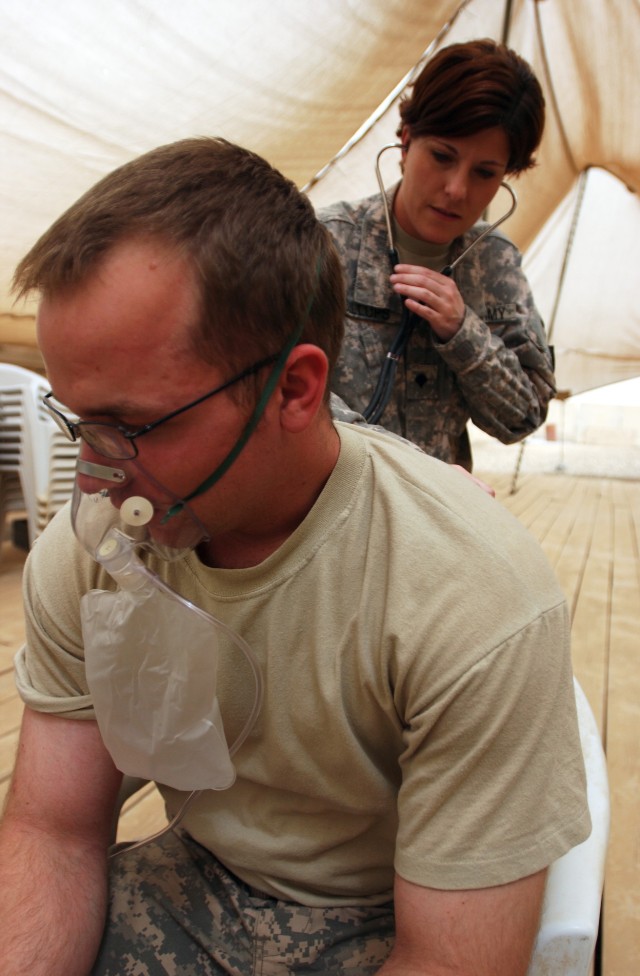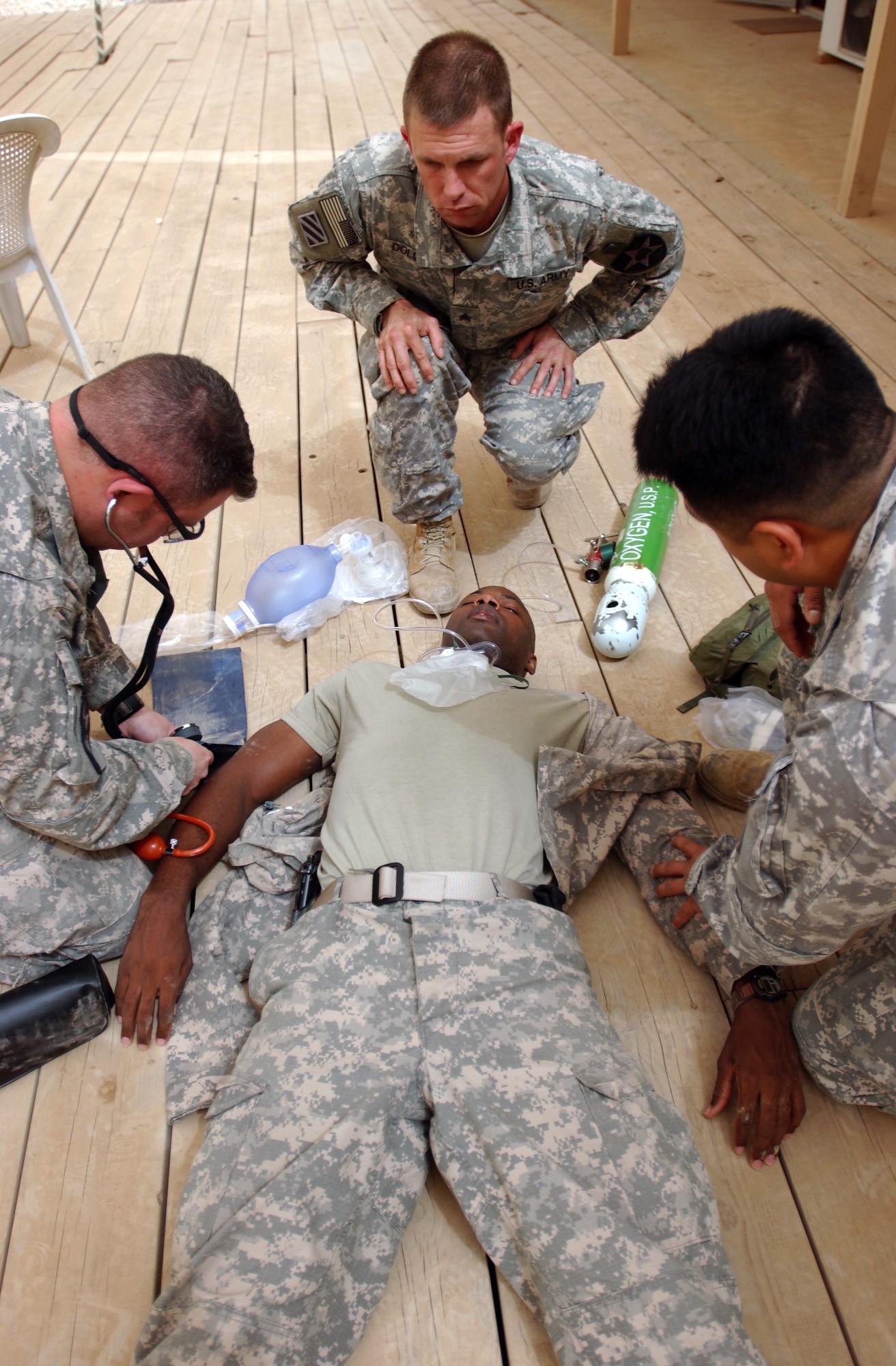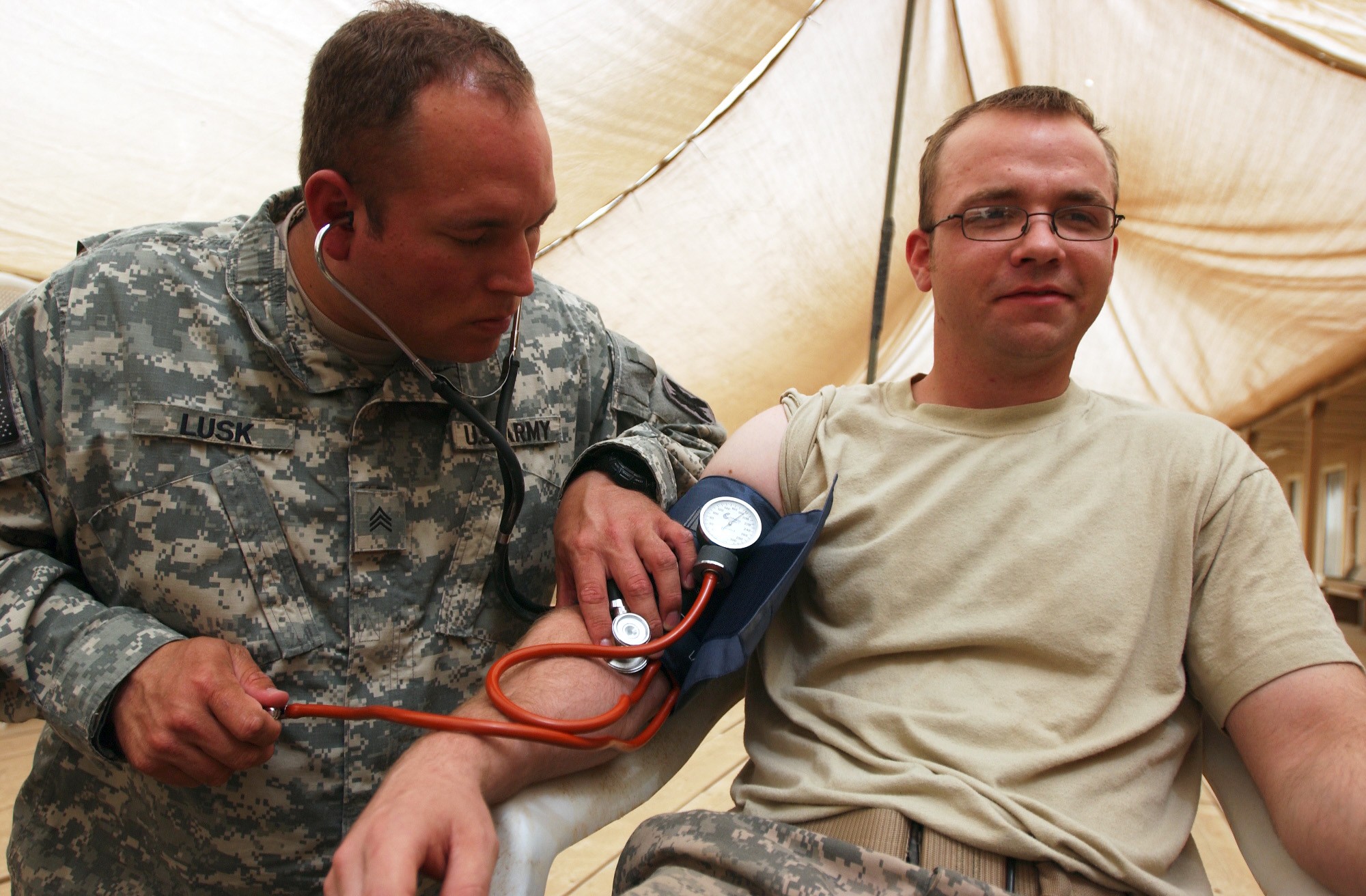CAMP LIBERTY, Iraq - It's understood that combat medics won't always be in combat and that upon redeploying they'll return to their roles of treating and caring for troops in a garrison environment.
To help prepare their medics for a future redeployment and to enable them to train others, the leaders of 4th Stryker Brigade Combat Team, 2nd Infantry Division, enlisted the help of two National Registry paramedics from 422nd Civil Affairs Battalion to teach a combat medic sustainment course.
Focusing on three functional areas - pre-hospital trauma life support, advanced medical life support and tactical combat casualty care - the week-long course not only taught the students the course material but also how to teach it to others as well, explained Capt. Gary Grassi, a civil affairs team leader with Company B, 422nd CA Bn. and one of the two Army Reserve Soldiers who taught the class.
"The goal is to build a core group of instructors," said Sgt. 1st Class David Crowley, a Special Operations medical sergeant with 422nd and the other course instructor.
In addition to 4th Bde., Soldiers, medics from nearby units participated in the training, including from the two local troop medical clinics.
Witmer TMC nurse Capt. Beth Acker, said the course has many benefits for her Soldiers.
"It's refreshing them of things they don't get to do every day," she said, adding that going beyond just treating traumatic injuries, the course deals with how to identify and treat ailments affecting patients that the medics may encounter on scene.
"It gets their critical thinking going," Acker said.
The materials being taught comprise more than just off-the-cuff training by two experienced medical professionals: they are structured courses accepted by both national and international medical organizations, Crowley explained.
"We try to bridge the gap between civilian and military training," the Richmond, Va. native and critical care flight paramedic said. "If [the students] move away from the military world, they actually have some skills recognized in the civilian world."
By focusing more on overall medical training than just treatment of traumatic injuries like the ones they would only see in combat, the medics are able to expand their skills in a broader way, explained Sgt. 1st Class Romond Davis, the brigade surgeon cell noncommissioned officer in charge.
"The training was very informative, very good for when we go back [home]," he said, explaining that the second half of the course taught the attendees how to set up training on all the topics they learned in the first half. "We'll be able to stand up our own team ... to do a lot of in-house training."






Social Sharing